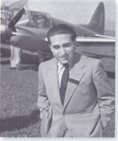PRODUCT DESCRIPTION
MB 339 HISTORY
Designed by the engineer Ermanno Bazzocchi and built by Aermacchi of Varese (M = Macchi, B = Bazzocchi), its cell derives directly from that of another famous Italian training aircraft, the MB-326 (In particular the K version with which also shares the same engine The Rolls Royce Viper can be considered a two-seater evolution). The front part, however, was completely redesigned to allow the two pilot seats to be scaled in height and to guarantee better visibility (especially on landing) to the instructor, seated in the rear seat. The first 101 specimens entered service in 1979.
The aircraft participated, as a co-production with Lockheed, in the US JPATS (Joint Primary Aircraft Training System) competition for an advanced trainer banned in 1990, but the competition was won in 1995 by a propeller plane, the Raytheon / Pilatus Aircraft derived from the PC-9 Mk 2 and entered into service as Raytheon T-6 Texan II, thanks also to the unclear conditions placed in the call that did not specify whether the trainer should necessarily be propelled by a jet engine.
The Comando de Aviación Naval, the Air Force of the Argentine Navy, was the first customer of the predecessor of the MB-339, purchasing 8 copies of MB-326GB in 1969. The 10 units of the MB-339 purchased in 1979 were the only jet airplanes operating from Port Stanley airport during the Falklands War (in Spanish: Guerra de las Malvinas) in 1982.
On May 21, during a routine reconnaissance flight, the MB-339 piloted by Lt. Guillermo Owen Crippa was the first aircraft to attack the amphibious forces of the Royal Navy hitting the frigate HMS Argonaut. During the conflict 5 aircraft were captured or destroyed by British forces.
The Eritrean Air Force has widely used its MB-339 in all kinds of roles, from that of trainer to that of fighter-bomber, both against the Ethiopian Air Force, and against rebels and smuggler groups. There is little information relating to the combat performance of the aforementioned squadron of MB-339 aircraft (like the rest of any Eritrean aircraft), to be considered unreliable.
There is also the possibility of mounting, in stations 2 and 5, a Pod for automatic cannon DEFA 553 caliber 30 mm, with 120 rounds; alternatively, again in stations 2 and 5, two subalar Pods similar to those of 30 mm, but of 12.7 mm (50 BMG) with 300 shots.

